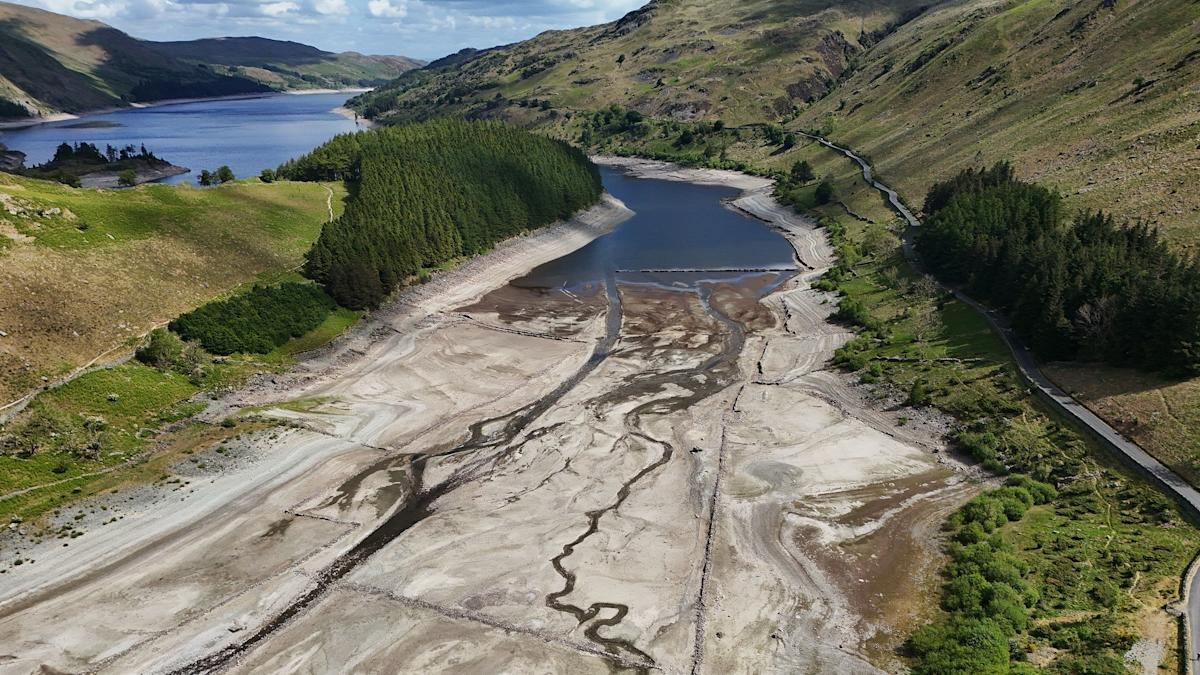News
Drought declared in Noth-West England amid water concerns

A drought has officially been declared in north-west England due to rapidly declining reservoir levels, sparking concerns over potential water shortages.
The Environment Agency, on Thursday, May 29, 2025, stated that while hosepipe bans are not yet in effect, they could be introduced if conditions continue to worsen.
These decisions fall under the jurisdiction of individual water companies.
These are expected to implement their pre-established drought response plans.
Elsewhere in England, the situation is also serious.
Much of the country is experiencing what is termed “prolonged dry status,” the phase immediately preceding a drought.
If substantial rainfall does not occur soon, more regions could transition into official drought status.
The severity of the situation has been underscored by recent weather patterns.
Between February and April, England experienced its driest period on record.
Even though some rainfall has occurred recently, it has not been sufficient to reverse the trend.
Rivers remain at exceptionally low levels, and reservoirs continue to deplete at an alarming rate.
One of the most affected water providers, United Utilities, has reported particularly low reservoir levels.
The Carlisle reservoir currently stands at only 46.4% of its capacity, a stark contrast to the 92.5% it held at the same time last year.
Similarly, the Haweswater and Thirlmere reservoirs, which supply water to parts of Cumbria and Manchester, are at 47.5%, significantly lower than the 94.8% recorded during this period in the previous year.
These falling levels have prompted increased concern over the region’s water supply.
A spokesperson for the Environment Agency confirmed the drought status in the north-west, attributing it to significantly low water levels in both rivers and reservoirs.
They added that while no other region in England is currently classified as being in drought, conditions are being closely monitored across the country.
Experts point to climate change as a significant factor contributing to the current water crisis.
Scientists have warned that climate breakdown is making droughts more likely and more severe due to increasingly erratic rainfall patterns.
Richard Allan, a climate science professor at the University of Reading, explained that the lack of rainfall during the spring of 2025 constituted a meteorological drought.
This led to rapid depletion of soil moisture, raising concerns about an agricultural drought.
As water levels in rivers and reservoirs continue to fall, the risk of a full-scale hydrological drought increases.
Allan emphasized that droughts are expected to develop more quickly and become more intense as global temperatures rise.
This is because warmer air holds more moisture, effectively drawing water from the land and transferring it to storm systems in other areas.
As a result, both wet and dry extremes become more pronounced, with increasingly volatile shifts between them.
The only way to mitigate these intensifying weather extremes, he noted, is through the rapid reduction of greenhouse gas emissions across all sectors of society.
Adding to the complexity of the crisis is the fact that no major new reservoirs have been constructed in England for over 30 years.
This long-standing lack of infrastructure development has left the country vulnerable during prolonged dry spells.
However, in a recent development, the government announced that two new reservoirs have received approval to begin construction.
It is supposedly an important step toward addressing long-term water supply challenges.
The Guardian has recently reported that in order to avert a full-scale drought, rainfall would need to reach levels not seen since 2012, a year marked by record-breaking floods.
Unfortunately, forecasts indicate that hot and dry weather is more likely in the coming weeks.
This makes such a dramatic turnaround unlikely in the near term.
In summary, north-west England is now in official drought status, with other areas at risk of following.
Low reservoir and river levels, driven by the driest early-year period on record and compounded by climate change, have created a serious water crisis.
While new infrastructure is finally on the horizon, immediate relief will depend largely on weather patterns that currently offer little hope.
For Diaspora Digital Media Updates click on Whatsapp, or Telegram. For eyewitness accounts/ reports/ articles, write to: citizenreports@diasporadigitalmedia.com. Follow us on X (Fomerly Twitter) or Facebook












